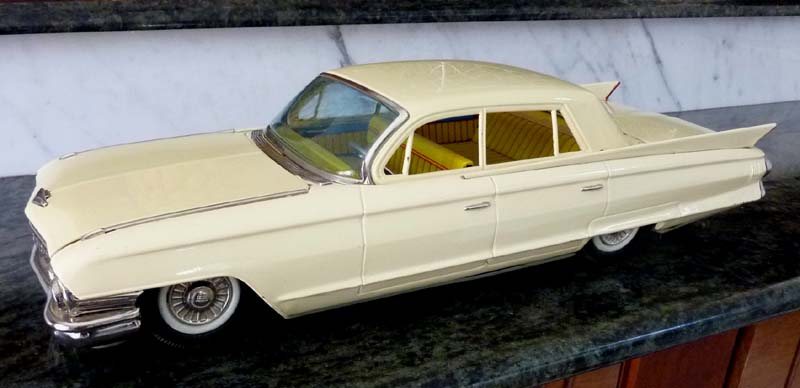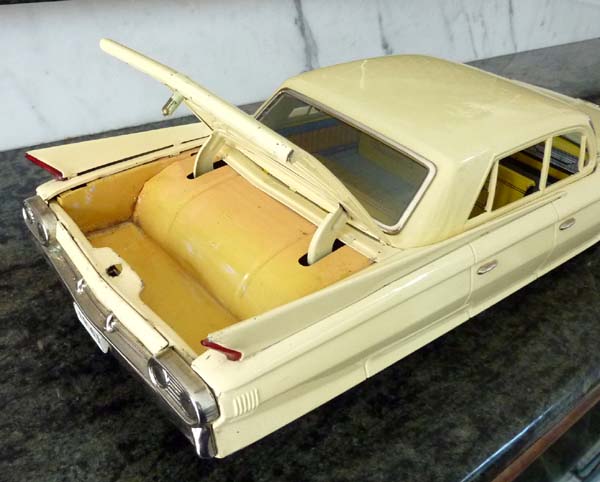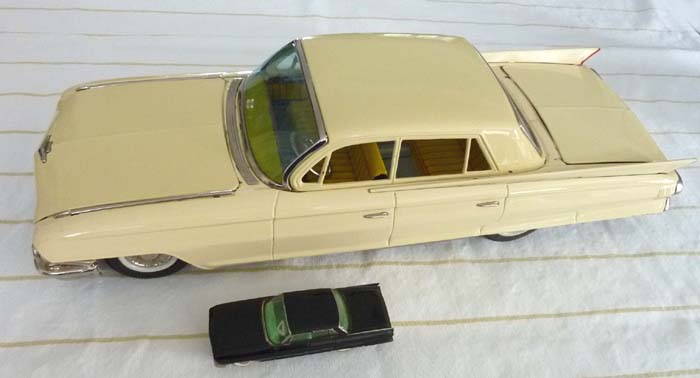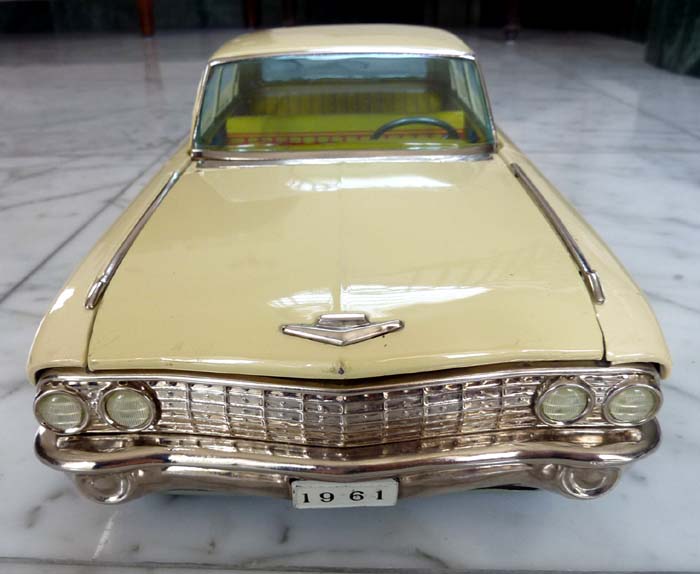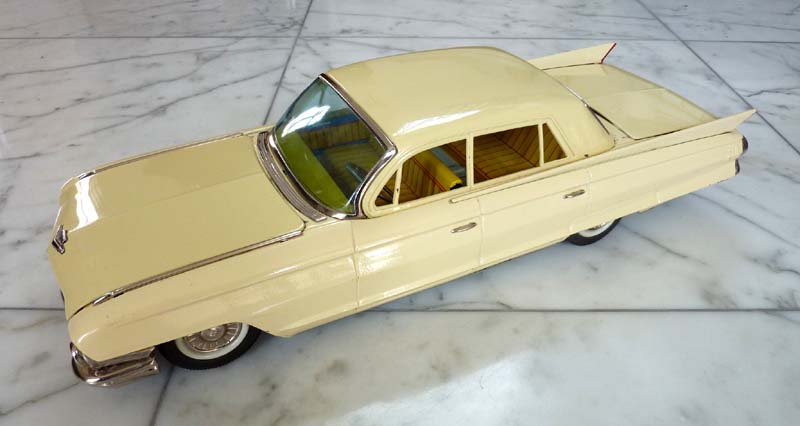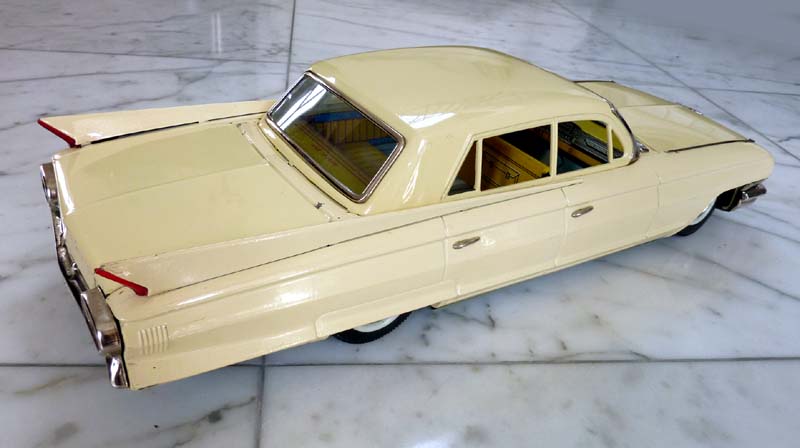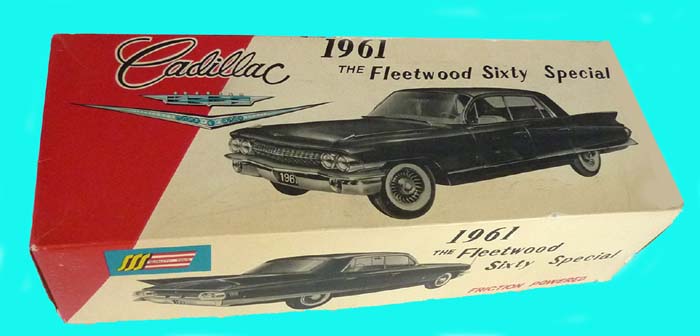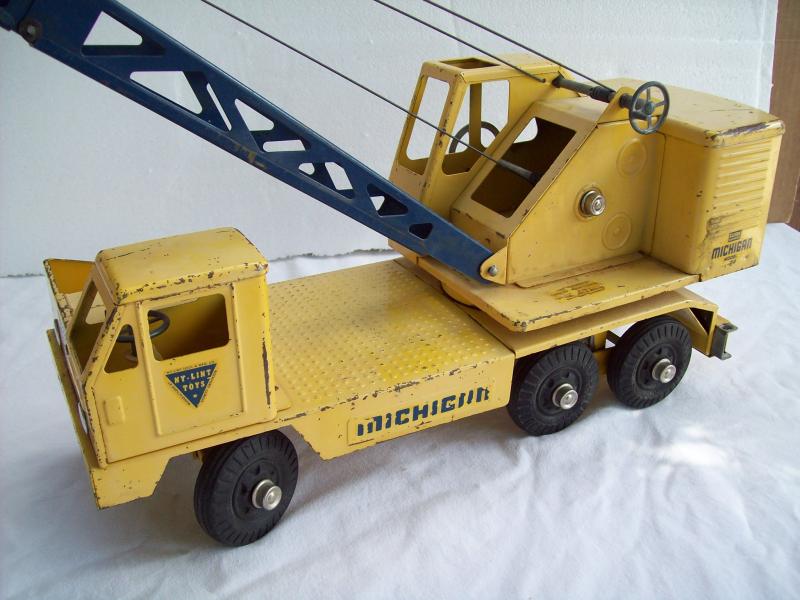The Doepke MG and Jaguar XK as well as their trucks, were made of die-cast aluminum and while being a bit simplistic in details, are nice toys. I am not sure that they sold in that large of numbers but you find the jaguar and MG more often than the trucks, so indeed they must have been the best sellers, and they both are sports cars, kind of proving my point that cars WOULD have been more popular than trucks IF made available.
Larry is correct in pointing out that the American toys were more expensive, they were in most cases. There was of course a resentment against both German and Japanese toys, largely justified by the actions of the governments of these two countries. Personally, I am never making the population of a given country, responsible for the sins of their masters, especially in the circumstances in which power was held in Japan, or how it was seized in Germany or Russia. So I have no resentment for the toy makers, I am simply trying to collect the best of the affordable for me.
The Japanese produced an astounding number of toys, MOST cheap disposable items encompassing a vast category of subjects. Only a small percentage of these toys (as in toy of cars, aircraft and ships really) are great toys, and those are the ones I have been collecting for many years. Most of these toys, such as the big Cadilllac opening this thread, have never been seen by 99% of American grown men today who would have been of the age to play with such toys. They were rare then, they are rarer today. Why is that? Because of the way they were marketed.
The Japanese companies always built hand made prototypes of their toys, generally made of... painted plastic materials. They then went to the American trade shows, the New York and Chicago toy fairs, showed the models and took orders from the large department stores. Only the exact numbers of toys generated by these orders were produced, and the larger the toys, the smaller the numbers because of higher costs. Hence, while Tonka would produce up to a million of a given toy, some of the Japanese best cars were only produced in a few thousands, making them very difficult to find today. I own a single such prototype, that of a robot later produced by Yonezawa under the Cragstan brand. Cragstan was a New York distributorship led by Craig Stanton.
After the end of the conflict in Japan, the American forces literally ran the country for a few years, with general MacArthur at the helm. One of the priorities was to establish the manufacturing of goods to export so as to earn the greatly needed foreign currency as the Yen had collapsed.
Toys were an easy sell to export, so the US Army put several Japanese companies in business, that were already making toys before WW2. Because the steel industry had been bombed to extinction, the US Army imported sheet steel from the USA and distributed it to those toy companies, to get them started. The US taxpayer paid for it!
In the 1950s, as the Japanese steel industry recouped, toys were not a priority for domestic steel, so the toy companies kept buying the stuff from the USA until the early 1970s.
Tonka trucks were steel and the others were tin.
Again, this is an erroneous statement. Steel is steel especially when it comes from the same mills, and its strength only depends on its thickness. In the case of Tonka trucks, most are the same thickness as the large Japanese toy cars and trucks. Most people have only seen the cheap, small Japanese toys, very few have been exposed to the great and now rare Japanese toys, because the best were expensive, so produced in smaller numbers.
